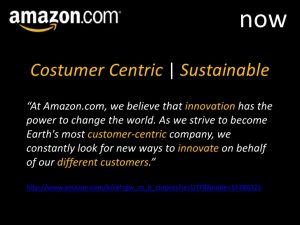
Many companies have decided that being customer centric is the new way forward. Some brands — most notably Zappos and owner Amazon — discovered quite a while ago how powerful being customer centric is. To wit, it’s Amazon’s mission to be the most customer centric company in the world. Yet, the challenge for business is executing against that lofty concept. It’s funny how companies seem to have woken up to this idea. If they write that they are now focused on the customer, you might assume that they had been asleep at the wheel for the preceding years? Fancy forgetting the customer pays the bills! Yet, I have seen firsthand how “things” get in the way. These include the irksome effects of internal politics and a command & control culture, confusing or rigid organisational hierarchies and structure, not to mention shareholder and competitive pressures, unfortunate regulatory issues or just being too big for one’s boots. There are plenty of excuses as to how companies lose the plot and appear to forget the importance of the customer.
Being customer centric is a mindset
No doubt, being customer centric is increasingly in vogue. In 2015, the KPMG International’s CEO survey showed that customer centricity was going mainstream in board rooms. That year, even 35% of financial institutions had made being focused on the customer a strategic priority. In 2016, KPMG’s survey reported that 88% of CEOs were concerned about customer loyalty and recognise that mastery of the customer agenda as essential. {Source:KPMG} The notion of customer centricity is springing up in strategic agendas all the over place. But, if everyone is now focusing on being customer centric, the winners — as ever — will be those who execute best. If everyone is now focusing on being customercentric, the winners will — as ever — be those who execute best. Customer centricity is a mindset that needs to be shared throughout the organisation and, I would argue, demonstrated most keenly by those in the C-suite.
Implicit behind the famed dictum that culture [emphatically] eats strategy for breakfast, lunch and dinner, is that is and always will be about execution. In other words, Being customer centric is just table stakes.
Customer or Employee Centricity?

When it comes to focusing in on one camp at to who is more important: your customer or your employee, it’s easy to find opposing arguments. The pat answer is generally the customer because they do pay our bills. However, reality is more subtle. And, part of the subtlety is that it depends on your company’s context and strategy. For many companies, you will hear the trite statement: “our employees are our greatest asset.” But, ask the employees how they feel and you may very well get some head-scratching responses. In a world where the number of touchpoints has mushroomed, where transparency of what goes on behind the scenes is dramatically greater and where the competition for talent has become sharper, many companies would do well to heighten their focus on the employee. After all, it’s the employee who works on the innovation and brings it alive to the customer. If even the manners of the delivery boy bringing the package to your door are poor, that too shines a bad light on your product and brand, no matter how well made the product itself might be. If even the manners of the delivery boy are poor, that too shines a bad light on your brand, no matter how well made the product might be.
Your thoughts?











Trackbacks/Pingbacks